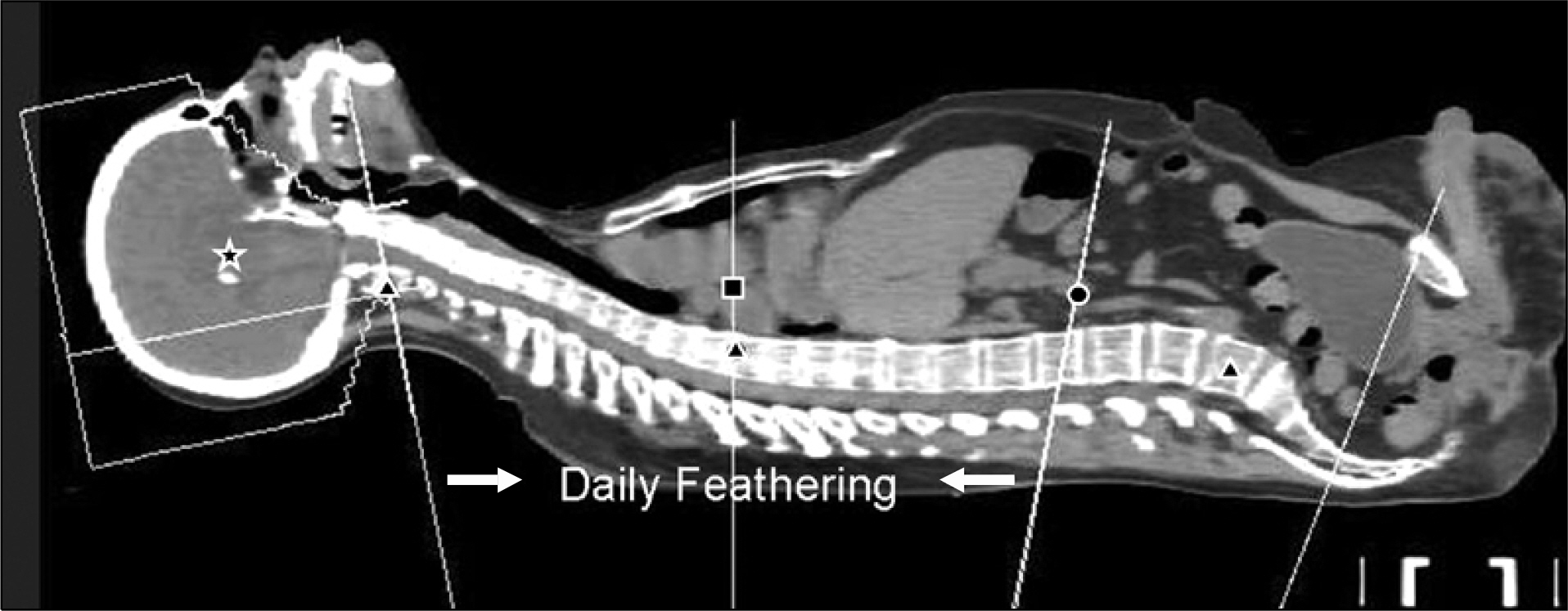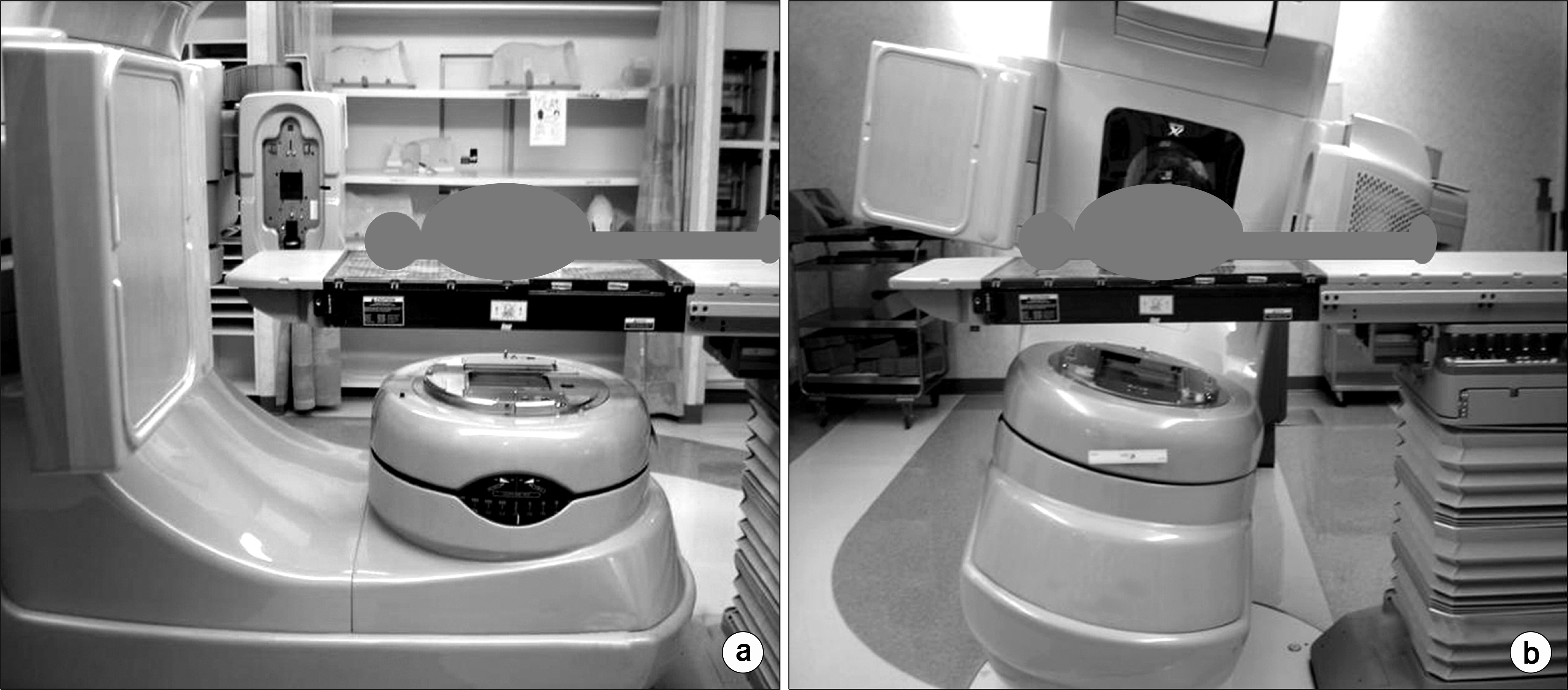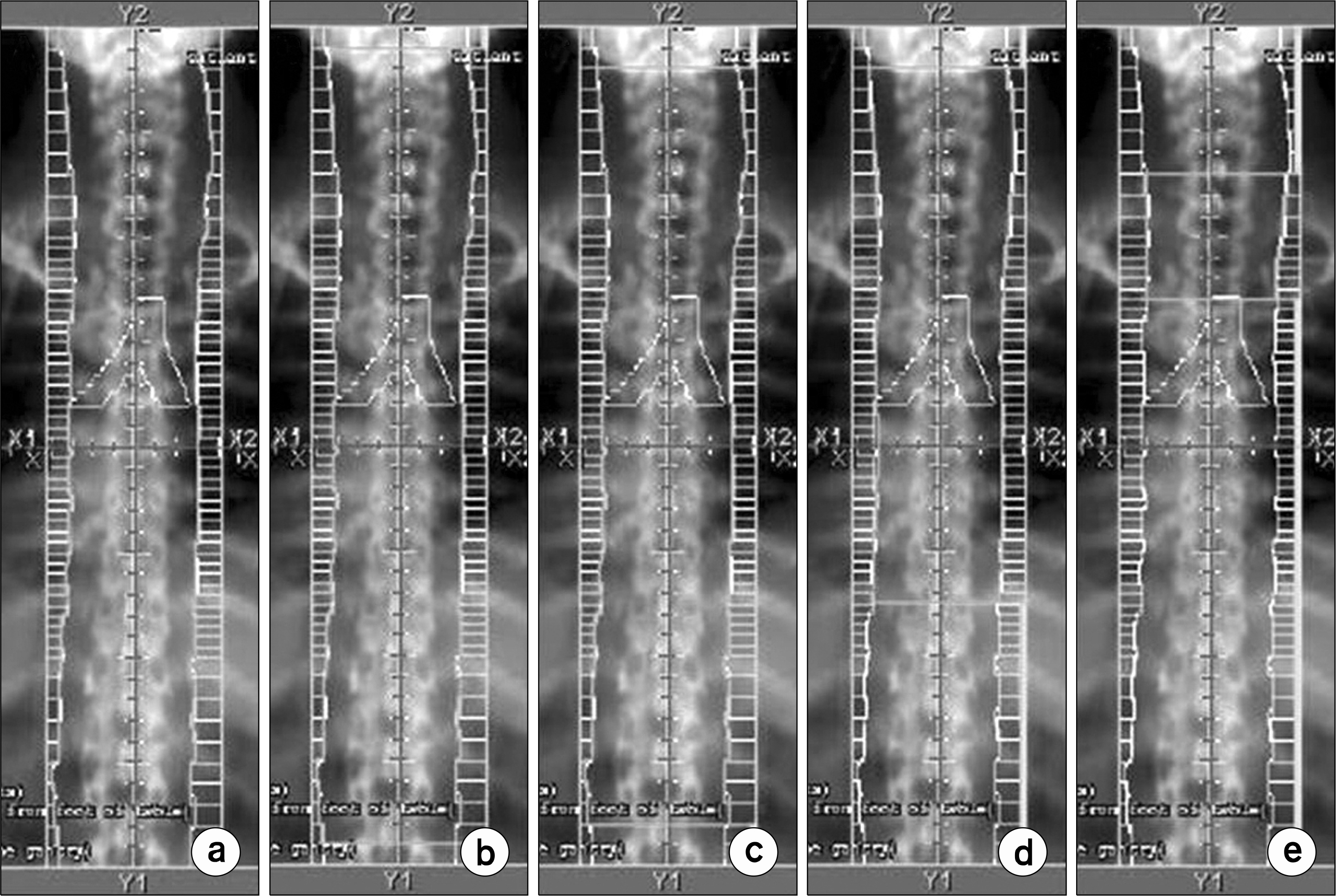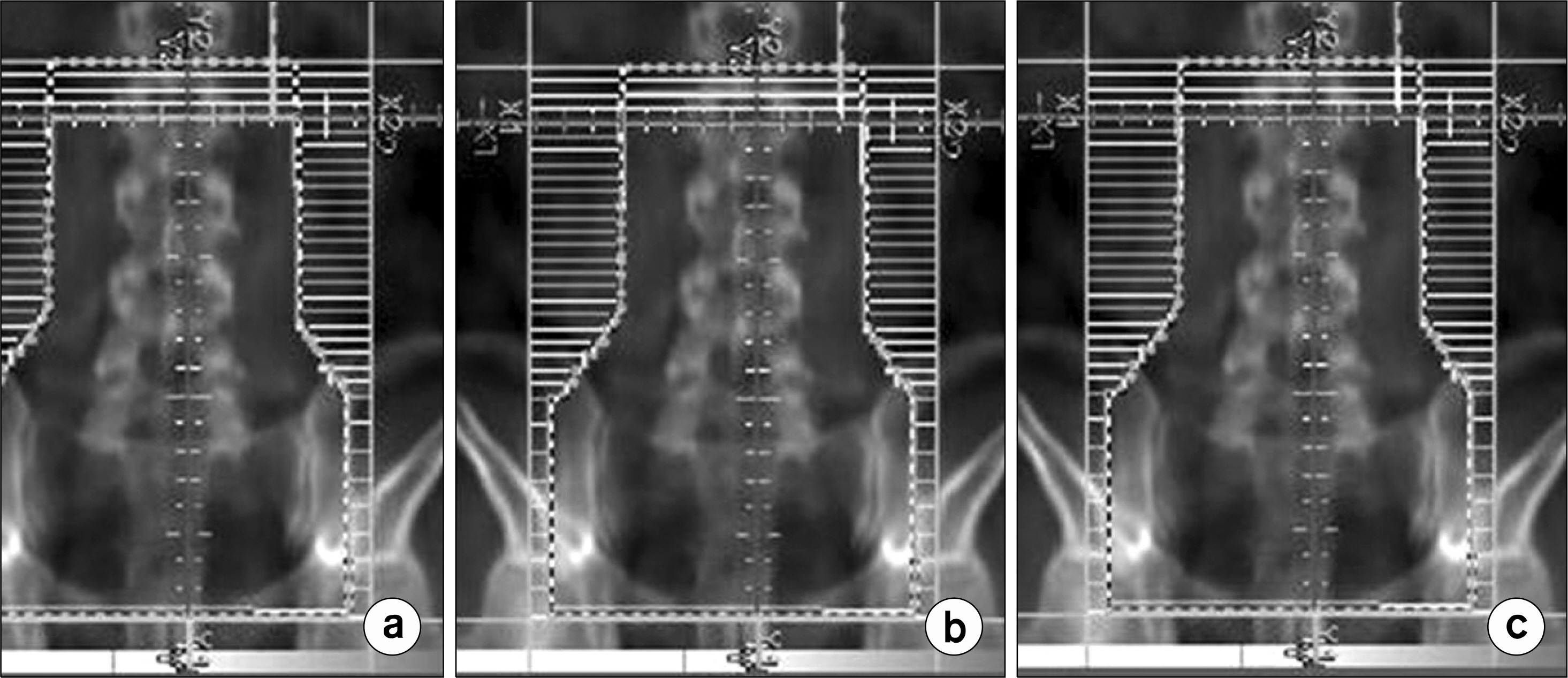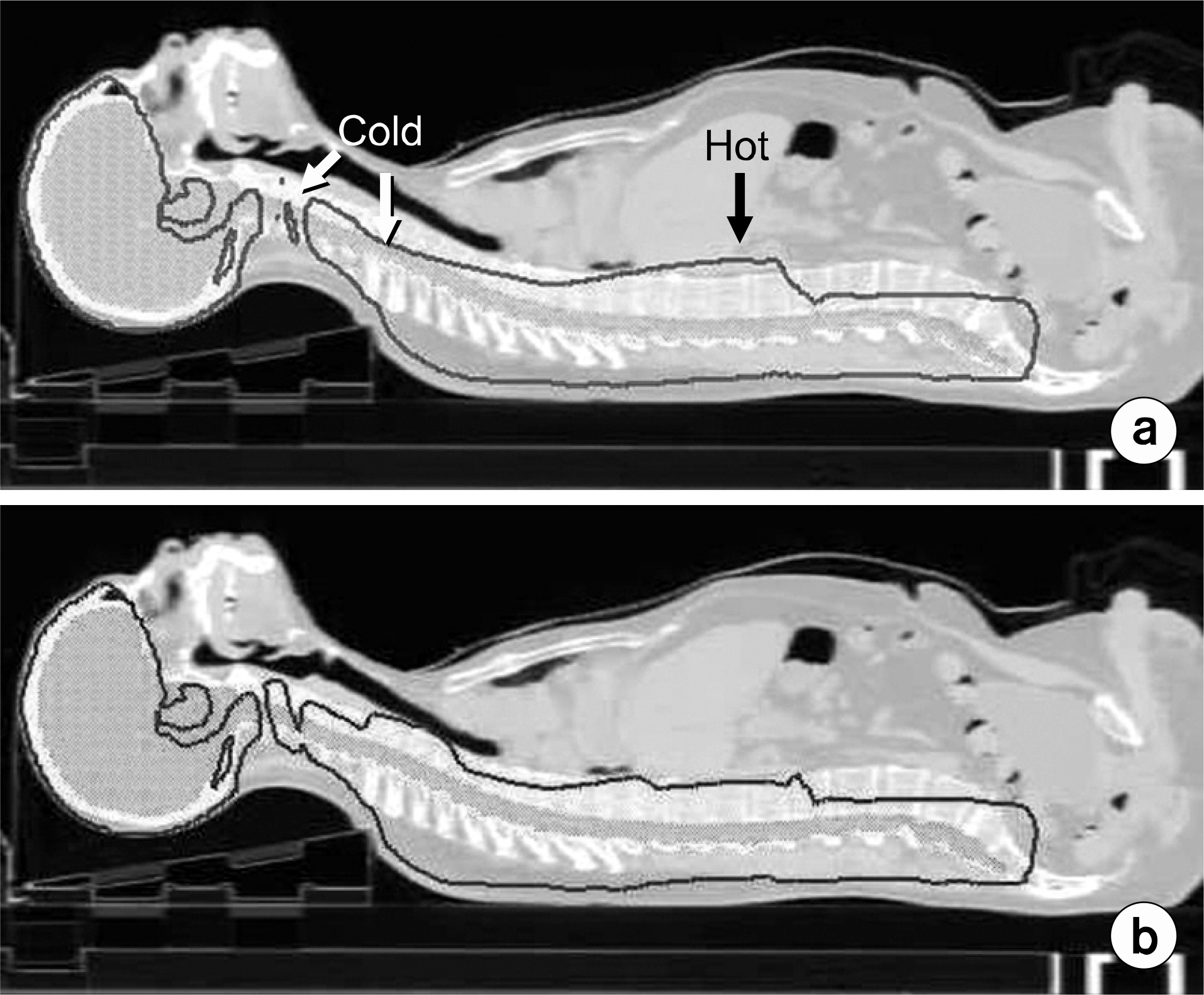Prog Med Phys.
2013 Dec;24(4):230-236. 10.14316/pmp.2013.24.4.230.
A Smart Setup for Craniospinal Irradiation
- Affiliations
-
- 1Department of Radiation Oncology, Mayo Clinic, Jacksonville, Florida, USA. Peterson.jennifer2@mayo.edu
- 2Department of Radiation Oncology, Virginia Commonwealth University, Richmond, Virginia, USA.
- KMID: 1910563
- DOI: http://doi.org/10.14316/pmp.2013.24.4.230
Abstract
- Our purpose is to present a novel technique for delivering craniospinal irradiation in the supine position using a perfect match, field-in-field (FIF) intrafractional feathering, and simple forward-optimization technique. To achieve this purpose, computed tomography simulation was performed with patients in the supine position. Half-beam, blocked, opposed, lateral, cranial fields with a collimator rotation were matched to the divergence of the superior border of an upper-spinal field. Fixed field parameters were used, and the isocenter of the upper-spinal field was placed at the same source-to-axis distance (SAD), 20 cm inferior to the cranial isocenter. For a lower-spinal field, the isocenter was placed 40 cm inferior to the cranial isocenter at a constant SAD. Both gantry and couch rotations for the lower-spinal field were used to achieve perfect divergence match with the inferior border of the upper-spinal field. A FIF technique was used to feather the craniospinal and spinal-spinal junction daily by varying the match line over 2 cm. The dose throughout the target volume was modulated using the FIF simple forward optimization technique to obtain homogenous coverage. Daily, image-guided therapy was used to assure and verify the setup. This supine-position, perfect match craniospinal irradiation technique with FIF intrafractional feathering and dose modulation provides a simple and safe way to deliver treatment while minimizing dose inhomogeneity.
Figure
Reference
-
1. Parker WA, Freeman CR. A simple technique for craniospinal radiotherapy in the supine position. Radiother Oncol. 78(2):217–222. 2006; Epub 2005 Dec 5.
Article2. Munshi A, Jalali R. A simple technique of supine craniospinal irradiation. Med Dosim. 33(1):1–5. 2008.
Article3. Hawkins RB. A simple method of radiation treatment of craniospinal fields with patient supine. Int J Radiat Oncol Biol Phys. 49(1):261–264. 2001.
Article4. South M, Chiu JK, Teh BS, Bloch C, Schroeder TM, Paulino AC. Supine craniospinal irradiation using intrafractional junction shifts and field-in-field dose shaping: early experience at Methodist Hospital. Int J Radiat Oncol Biol Phys. 71(2):477–483. 2008; ). Epub 2007 Dec 31.
Article5. Yom SS, Frija EK, Mahajan A, et al. Field-in-field technique with intrafractionally modulated junction shifts for craniospinal irradiation. Int J Radiat Oncol Biol Phys. 69(4):1193–1198. 2007.
Article6. Pai Panandiker A, Ning H, Likhacheva A, et al. Craniospinal irradiation with spinal IMRT to improve target homogeneity. Int J Radiat Oncol Biol Phys. 68(5):1402–1409. 2007; Epub 2007 Apr 30.7. Parker W, Filion E, Roberge D, Freeman CR. Intensitymodulated radiotherapy for craniospinal irradiation: target volume considerations, dose constraints, and competing risks. Int J Radiat Oncol Biol Phys. 69(1):251–257. 2007.
Article8. Kusters JM, Louwe RJ, van Kollenburg PG, et al. Optimal normal tissue sparing in craniospinal axis irradiation using IMRT with daily intrafractionally modulated junction(s). Int J Radiat Oncol Biol Phys. 81(5):1405–1414. 2011.
Article9. Chang EL, Wong PF, Forster KM, Petru MD, Kowalski AV, Maor MH. Verification techniques and dose distribution for computed tomographic planned supine craniospinal radiation therapy. Med Dosim. 28(2):127–131. 2003.
Article10. Rades D, Baumann R, Bremer M, Leuwer M, Karstens JH. Application of a new verification technique allowing craniospinal irradiation in supine position. Radiother Oncol. 58(2):215–217. 2001.
Article11. Liu AK, Thornton D, Backus J, Dzingle W, Stoehr S, Newman F. Supine craniospinal irradiation setup with two spine fields. Med Dosim. 34(3):214–216. 2009; Epub 2008 Oct 7.
Article12. Huang F, Parker W, Freeman CR. Feasibility and early outcomes of supine-position craniospinal irradiation. Pediatr Blood Cancer. 54(2):322–325. 2010.
Article
- Full Text Links
- Actions
-
Cited
- CITED
-
- Close
- Share
- Similar articles
-
- Two Cases of Thyroid Tumor after Radiation Therapy of Primary Malignancy
- CT Simulation Technique for Craniospinal Irradiation in Supine Position
- The Effect of Intermittent Craniospinal Irradiation and Intrathecal Chemotherapy for Overt Meningeal Leukemia
- Radiotherapy Results of pineal Tumors
- A case report on successful pregnancy and delivery in a medulloblastoma patient

